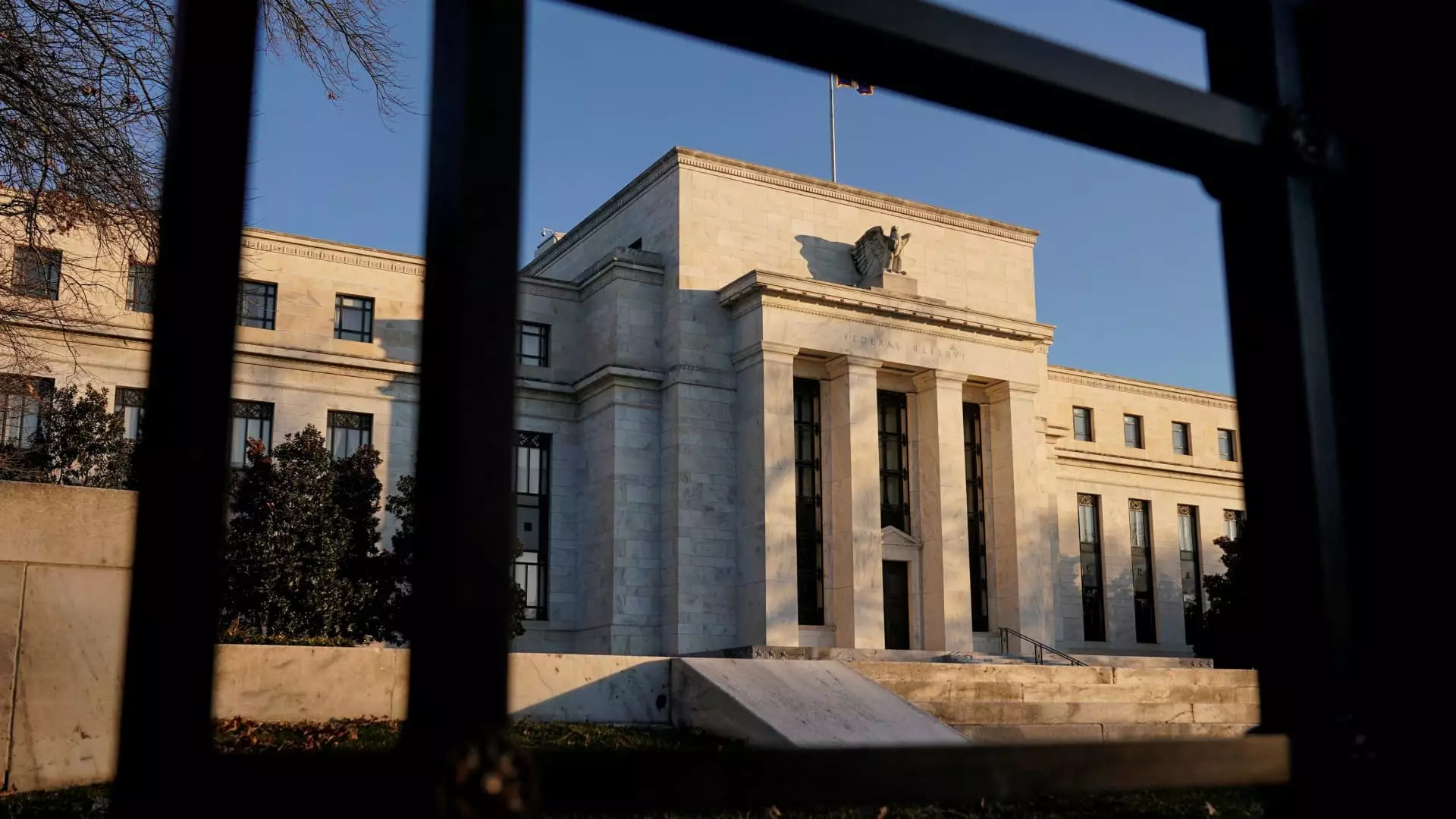The Federal Reserve’s decision to maintain interest rates on Wednesday comes as a stark reminder of the complex interplay between fiscal policy and the state of the economy. President Donald Trump’s trade agenda, particularly his tariff policies, is casting a long shadow over economic growth. The irony is striking; while inflation dipped recently, the impending repercussions of tariffs threaten to send prices soaring once more. This paradox raises a crucial question: is the Fed merely an observer in a game dictated by external forces, or does it have the power to steer the economy towards safer waters?
Brett House, an economics professor at Columbia Business School, warns that recent tariffs on aluminum, steel, and oil are not just minor inconveniences—they are critical ingredients in the manufacturing sector, and their prices will inevitably inflate. The central bank’s cautious stance reflects a larger uncertainty about not just domestic policy but also the global market. The Fed’s “wait-and-see” approach may seem prudent, but it can also be perceived as a sign of drift as serious economic challenges loom.
Consumer Sentiment and Financial Strain
As we navigate through economic unease, consumer sentiment paints a distressing picture. Uncertainty stemming from the trade war has triggered apprehensions about potential recession, with the National Economic Council director Kevin Hassett indicating a brewing storm. The mounting pressures on household budgets signal a precarious balance; while the Federal funds rate influences lending significantly, it seems the everyday American feels little relief.
Greg McBride, the chief financial analyst at Bankrate.com, succinctly summarizes the paradox: “The pressure on household budgets is unrelenting.” Despite the Fed’s cautious approach, consumers continue to grapple with high prices and elevated borrowing costs. The promise of lower rates feels almost hollow when inflation is still biting hard at the wallet.
Are Declining Rates Enough? The Borrowing Paradox
While it’s optimistic that the Fed has begun to lower its benchmark interest rate, does this truly translate into a reprieve for the average consumer? Some relief is on the horizon; mortgage, auto loan, and credit card rates are showing signs of decline. Yet, they are merely easing from astronomical highs—seldom does a small decrease equate to tangible savings for consumers already drowning in debt.
The average credit card rate, now at 20.09%, is still significantly burdening consumers, while the average rate for a 30-year fixed mortgage stands at 6.78%. The alarming reality is that these rates have only begun to dip after soaring to unprecedented levels earlier. The crux of the issue lies in consumer ability to borrow. In a world where prices continue to rise due to tariffs, financial burdens only amplify.
The Interplay of Tariffs and Consumer Prices
The ripple effects of tariffs on consumer goods create a perplexing conundrum for policymakers. Higher tariffs inevitably lead to increased sticker prices, magnifying the difficulty for average Americans trying to make ends meet in the face of stagnant wage growth. McBride points out the enduring high price tags on vehicles despite a reduction in auto loan rates. The harsh reality is that tariffs threaten to further raise car prices, contradicting the very relief some families might hope to find.
This cycle of inflationary pressures from tariffs raises critical implications for long-term economic health and sustainability. What good is lower borrowing costs if the fundamental cost of living continues to escalate? A seemingly entrenched economic conundrum is forming, which suggests that our policymakers may need to rethink their approach to trade and inflation altogether.
Savings: A Silver Lining or a Stopgap?
In a landscape painted with several shades of grey, one might find solace in the realm of savings accounts. Although the Federal Reserve’s influence on deposit rates is muted, we see that top-yielding online accounts are still offering attractive rates. As McBride noted, savings rates are fortunately meeting inflation at a healthy rate, offering a slight glimmer of hope amid the fiscal gloom. However, the irony remains that high inflation erodes the very advantages these savings could provide.
Despite the current uprising in prices, the disconnect between savings and inflation creates a scenario where cautious consumers may still find small wins. Yet this doesn’t negate the hazards that loiter in the shadows of a fragile economy, constantly threatening to disrupt what little financial stability many have managed to claw their way toward.
As we stand at the crossroads of an uncertain economic future, it’s crucial to recognize that ignoring the implications of tariffs and their long-lasting impact on consumer behavior could further hamper growth. The Federal Reserve’s current stance may provide temporary relief, but the looming question remains—will we truly be prepared for the next wave of inflation?

